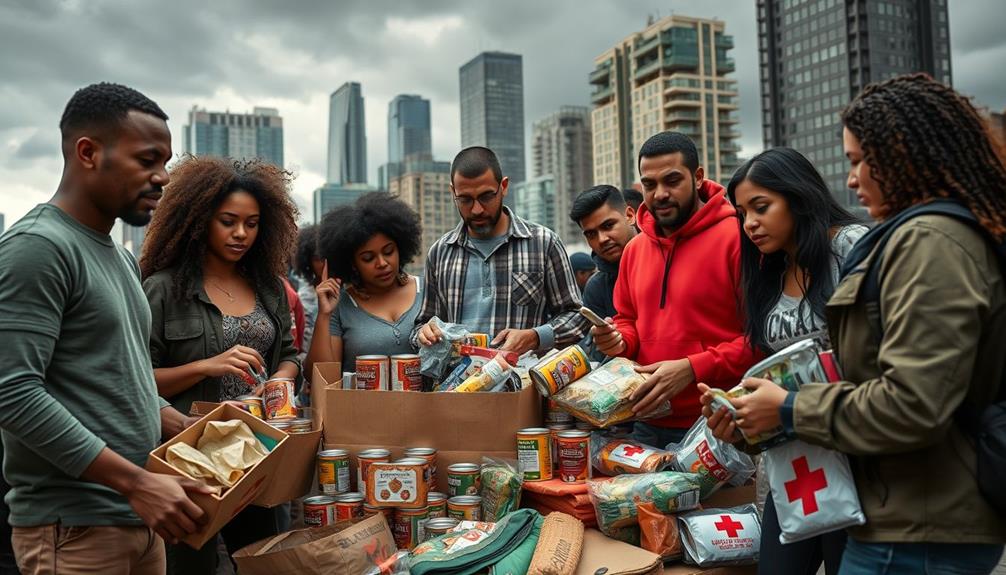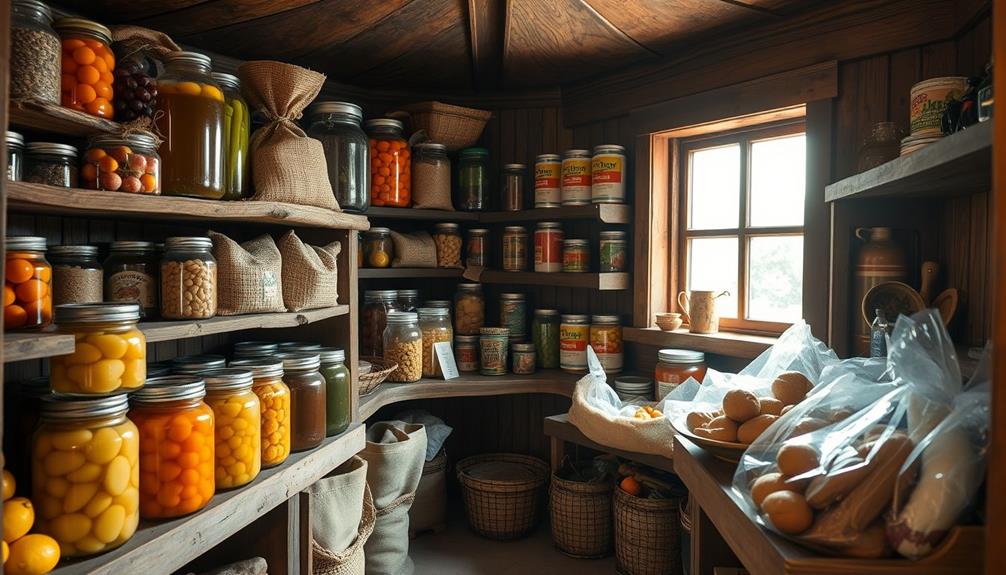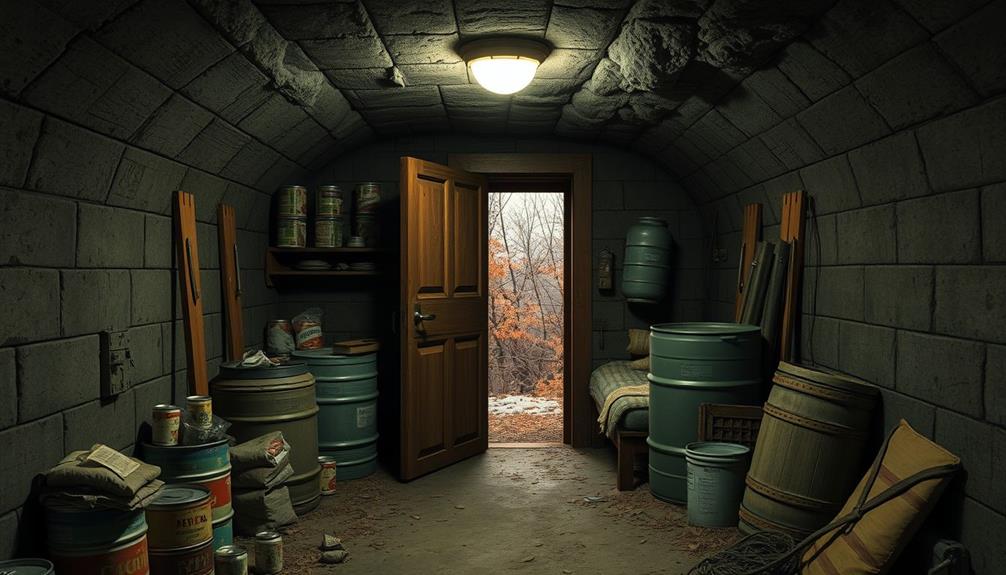You're not alone if you've noticed a surge in preppers. Nearly 30% of U.S. households, or about 25.8 million people, are now taking steps to prepare for uncertainty. Many younger adults cite climate change and societal instability as key motivations. With the COVID-19 pandemic impacting supply chains, awareness and demand for survival supplies have skyrocketed. Curiously, there's a growing number of women and younger individuals joining this movement, reflecting a diverse community. Understanding this trend can empower you and your community in managing future challenges, so keep exploring these insights further to uncover more essential information.
Key Takeaways
- The prepper community has grown to 30.3% of U.S. households, driven by concerns over climate change and societal instability.
- Younger adults, particularly Gen Z, increasingly participate in prepping, with about 40% identifying as preppers.
- Economic factors, including supply-chain disruptions, have heightened awareness and investment in preparedness resources.
- Significant gaps exist in American preparedness, with 44% lacking a first-aid kit and many missing critical emergency documents.
- Educational initiatives focused on first aid and community drills are essential to enhance preparedness and resilience in communities.
Prevalence and Demographics

Identifying as a prepper is becoming increasingly common in the U.S., with around 30.3% of households—approximately 25.8 million individuals—embracing this lifestyle in 2023. This growing trend reflects heightened awareness of potential emergencies and a desire for self-sufficiency among Americans. Many preppers prioritize stockpiling essential items, such as nonperishable foods, first aid supplies, and tastetested water purification tablets, to ensure their readiness for unforeseen events. Additionally, this lifestyle often involves acquiring survival skills, like gardening and basic repair work, to further enhance resilience in times of crisis.
This movement isn't confined to specific demographics; people from various backgrounds are joining in. Younger adults, in particular, are stepping up, motivated by concerns about environmental degradation and societal instability.
The community also features a notable gender dynamic, with 69% of preppers being male and 31% female, and female participation is on the rise.
Racially, the majority are white (81.8%), but diversity is growing as more individuals from different backgrounds become involved.
Motivations for Preparedness

The growing number of preppers reflects a heightened awareness of various global challenges that motivate individuals to take action. Concerns about climate change, pandemics, and civil unrest drive many to adopt preparedness strategies. You might find yourself stockpiling essentials or learning self-reliance skills.
Here's a quick look at some key motivations:
| Motivation | Percentage of Preppers | Examples |
|---|---|---|
| Climate Change | 45% | Gardening, water storage |
| Pandemics | 30% | Non-perishable food stock |
| Civil Unrest | 25% | Emergency kits, self-defense |
These motivations not only enhance personal safety but also foster community resilience, showing that prepping is about more than just survival—it's about thriving in uncertain times.
Economic Influences on Prepping

Economic influences play a significant role in shaping the prepping landscape. You might notice how financial factors impact your decisions and resources. As income levels vary, so do the abilities to invest in prepping.
- Supply-chain disruptions during COVID-19 heightened awareness and urgency around preparedness.
- The global survival tools market is projected to reach $2.46 billion by 2030.
- Resilient Citizens typically earn $54,000, allowing for greater investment in supplies compared to regular citizens.
- Average emergency savings for Resilient Citizens stand at $15,779, highlighting a financial edge in preparedness.
- Increased demand for prepping resources reflects a growing societal acceptance of self-sufficiency and readiness.
These economic factors underscore the importance of financial planning in your prepping journey.
Identifying Preparedness Gaps

Nearly half of Americans, about 44%, don't have a first-aid kit, revealing a significant preparedness gap that needs addressing. This lack of basic supplies highlights a broader issue: many also lack copies of critical emergency documents.
In addition, preparing a bug out bag can be an essential step in ensuring you have necessary items ready for any situation. Without these essentials, you're putting yourself at risk during emergencies.
The urgency for CPR training can't be overstated, as the survival rate for cardiac arrest without it's zero. By identifying these gaps, you can take proactive steps, like investing in emergency preparedness courses or creating a thorough emergency plan.
Engaging with your community to promote awareness and accessibility can also enhance overall preparedness, ensuring that you and your neighbors are ready for unexpected situations.
Educational Needs in Communities

Communities face significant educational needs in emergency preparedness, underscoring the importance of equipping individuals with essential skills and knowledge. Many people lack basic preparedness tools and training, which can jeopardize safety during crises.
To address these gaps, communities can focus on the following educational initiatives:
- First-Aid Training: Teach essential lifesaving techniques to empower individuals.
- Emergency Kits: Provide guidance on assembling thorough survival kits.
- Document Preparedness: Offer workshops on organizing critical emergency documents.
- Community Drills: Conduct regular drills to practice response strategies.
- Resource Accessibility: Create platforms for sharing local emergency resources and support networks.
Future Trends in Prepping

As we look ahead, the prepper movement is set to expand further, driven by rising concerns about climate change, pandemics, and societal unrest.
You'll likely see younger generations, particularly Gen Z, embracing prepping more than ever, with around 40% identifying as preppers. This trend reflects a shift towards self-sufficiency and community resilience.
As supply-chain issues persist, expect businesses to cater to the growing demand for survival supplies and emergency kits.
Additionally, educational initiatives will become essential, equipping individuals with necessary skills like first aid and gardening.
As you navigate this evolving landscape, staying informed and adaptable will be key to thriving in an increasingly uncertain world.
The future of prepping is bright, with opportunities for innovation and collaboration.
Political Diversity Among Preppers

Within the prepper community, political diversity plays an essential role in shaping the movement's identity and growth. You'll find preppers from various political backgrounds, each bringing unique perspectives on preparedness. This diversity enhances discussions and initiatives, fostering a more inclusive environment.
- Environmentalists prepping for climate change impacts
- Libertarians promoting self-sufficiency and minimal government
- Urban dwellers focused on community resilience
- Traditionalists valuing heritage skills and self-reliance
- Younger generations advocating for innovative solutions
Embracing this political spectrum encourages collaboration, as preppers unite around common goals like safety and sustainability. This proves that the need for preparedness transcends party lines.
Understanding these dynamics enriches your experience within the prepping community.
Frequently Asked Questions
What Are the Best Resources for Beginner Preppers?
To start prepping, you should explore online forums, read survival books, and watch instructional videos. Joining local prepping groups can also provide support, resources, and hands-on experiences to enhance your skills and knowledge effectively.
How Can Prepping Contribute to Community Resilience?
Prepping builds community resilience, with 25.8 million Americans identifying as preppers in 2023. By sharing resources and skills, you strengthen local networks, ensuring everyone's better equipped to face emergencies and challenges together.
Are There Specific Prepping Strategies for Urban Environments?
In urban environments, you can focus on space-efficient storage, creating emergency kits tailored to city needs, establishing community networks, and learning essential skills like gardening on balconies or rooftops for self-sufficiency and resilience.
What Psychological Impacts Can Prepping Have on Individuals?
Prepping can bring both peace of mind and anxiety. You feel empowered by self-sufficiency, yet fear the unknown. Balancing preparedness with reality helps you navigate these psychological impacts, fostering resilience in uncertain times.
How Can Preppers Stay Informed About Emerging Threats?
To stay informed about emerging threats, you should regularly follow news outlets, join prepper forums, attend workshops, and engage with local community groups. Networking with like-minded individuals can enhance your preparedness knowledge and awareness.
Conclusion
As you navigate this evolving landscape of preparedness, remember that being a prepper isn't just about stockpiling supplies—it's about building resilience for whatever life throws your way. Like a modern-day Noah, you have the power to weather storms, whether they're natural disasters or societal shifts. Embrace the diversity of motivations among your peers and recognize that knowledge is your greatest asset. With the right skills and mindset, you can face the future confidently, prepared for anything.










